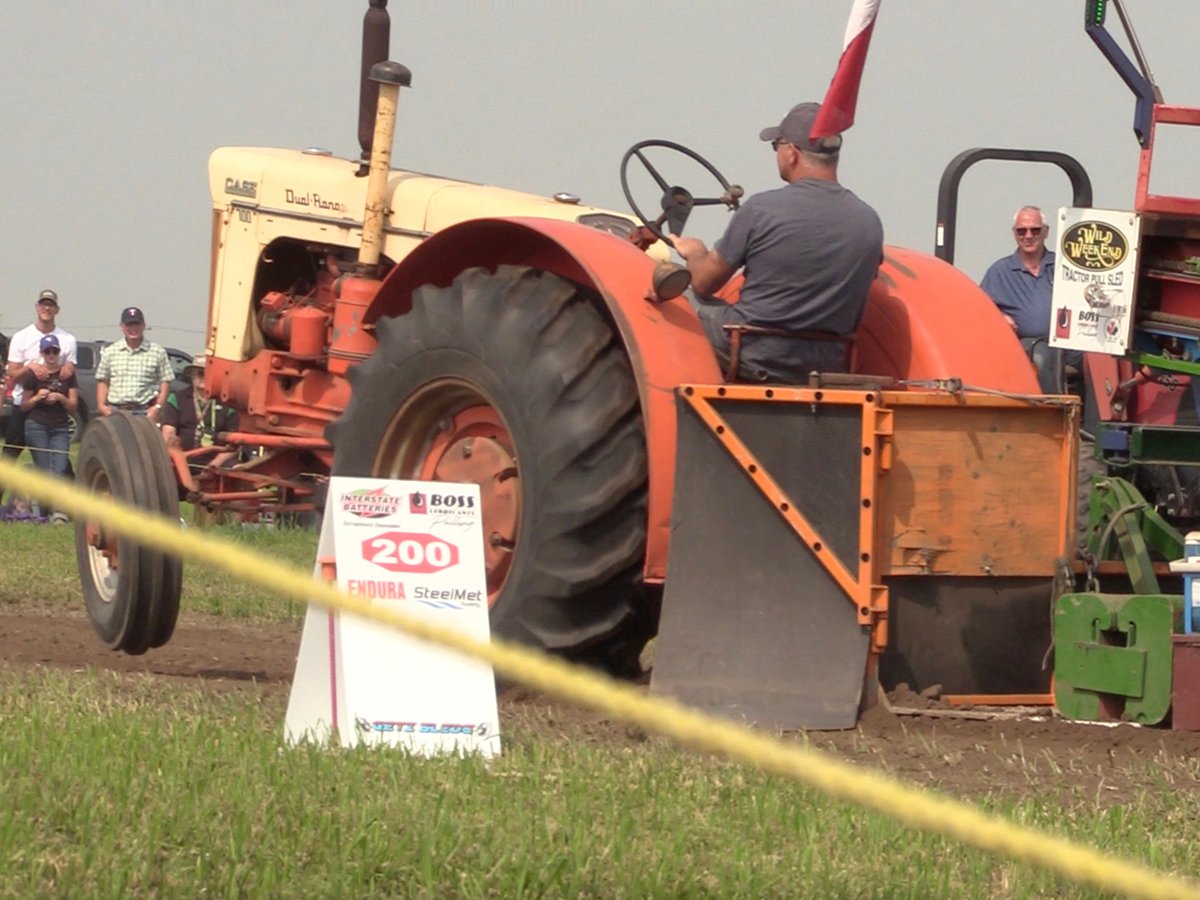Other announcements in the 2017 Sask. budget include:
Education spending is down, education property tax is up and Saskatchewan school boards will remain as they are, taxpayers learned in last week’s provincial budget.
Operational spending for K-12 education in the 28 school divisions dropped $67 million or 1.2 percent from last year. Divisions will get $1.86 billion from government and property taxes.
Overall, education will receive $2.02 billion, the second largest allocation behind the $5.2 billion health budget.
The cut led Saskatchewan Teachers Federation president Patrick Maze to say rural teachers should be concerned.
“Schools that are of low attendance, they’re going to be under close scrutiny,” he said. “I wouldn’t be surprised if school divisions are looking for cuts somewhere.”
Read Also

Vintage power on display at Saskatchewan tractor pull
At the Ag in Motion farm show held earlier this year near Langham, Sask., a vintage tractor pull event drew pretty significant crowds of show goers, who were mostly farmers.
But it was the announcement that school divisions wouldn’t be amalgamated that struck many.
Finance minister Kevin Doherty said the government clearly heard that people, rural residents in particular, wanted local representation to remain elected and boundaries to be unchanged.
“Our MLAs were literally swamped,” he said, referring to feedback from constituents regarding possible changes.
The government will make some legislative changes to give the education minister more authority when it comes to directing shared services such as procurement, bussing, payroll and salary ranges for administrators and trustees.
Maze said the government wasn’t interested in transforming the education system in the province.
“When you look at elected versus appointed governance, I think there was an opportunity to get things right there,” he said. “It’s a bigger discussion that should have been had.”
He said while school boards are protected, students are not.
Saskatchewan School Boards Association president Shawn Davidson said boards have a huge job ahead of them in their own budgets.
“In most divisions, about 75 percent of their expenditure is people,” he said. “What that will mean will be different for every member board.”
Boards have different needs, he said. For example, some require English as an additional language services more than others.
Davidson said boards also have to wait for more details on changes to the funding formula before they can proceed.
On the decision to keep all 28 boards, he said he wasn’t too surprised.
“They heard loud and clear from the public that education belongs to the community and that local voice is important in decisions surrounding education and allocation of property tax dollars,” he said.
He added that boards are already working together on things like bulk purchasing of natural gas and bussing but the SSBA will help the boards find more efficiencies.
The government also moved to restore the 60 percent government/40 percent property tax funding split for education. In recent years, the property tax portion was around 35 percent.
It lowered mill rates for all property classes, but because of reassessment, the government will actually take in more revenue. Property will be affected differently depending on reassessed value.
The mill rate for agricultural land dropped to 1.43 from 2.67 last year, while the mill rate went to 4.12 from 5.03 on residential land.
Tax revenue raised from agricultural land will climb to $46.1 million from $39 million, while residential taxes will go to $359.6 million from $324.7 millions.
Commercial/industrial and resource lands together will contribute the remainder.
The total education tax raised from property will rise by $67 million or nearly 10 percent, from $680 million to $746.9 million.
In other budget areas, the health budget is up but there are increases to some long-term care fees and cuts to the hearing aid plan, podiatry services, low-cost orthotics and continuous positive airway pressure generators for sleep apnea sufferers. Government will still cover low-income residents.
- The province is forecasting a deficit of $685 million this year and a $304 million deficit in 2018.
- The provincial sales tax will increase to six percent and PST exemptions will be lifted on children’s clothing, restaurant meals, construction services and other items.
- Regional park funding has been cut by 50 percent.
- The Saskatchewan Transportation Company is being axed, eliminating 224 jobs.
- Provincial universities, colleges and technical institutes will have their funding cut by five percent.
- Funding for highway infrastructure has been cut by $15 million.

















